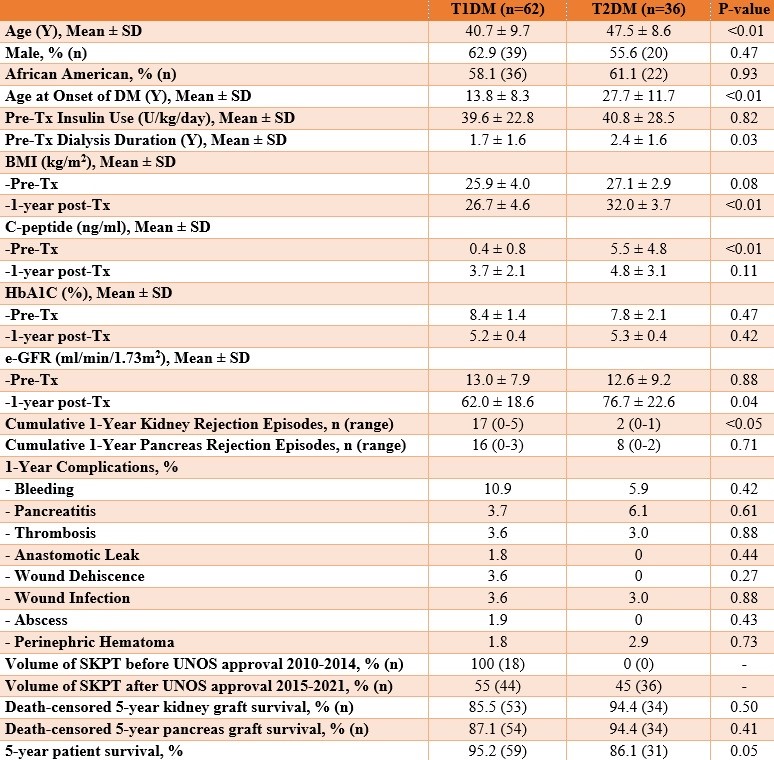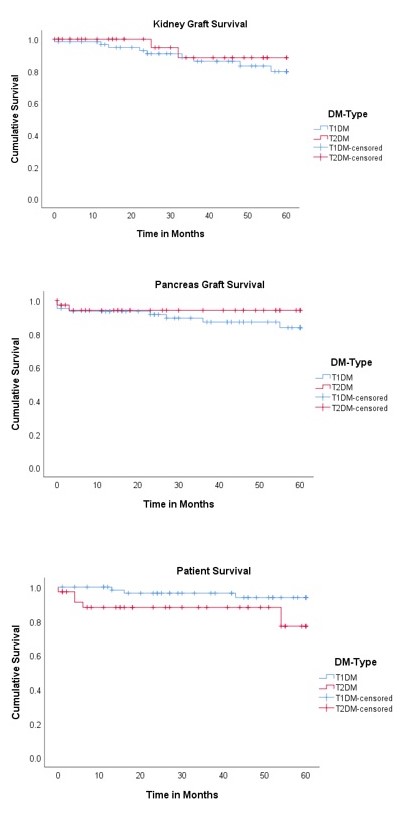Outcomes of simultaneous kidney-pancreas transplantation in patients with type-1 and type-2 diabetes mellitus
Muhammad S Naseer1, Hosein Shokouh-Amiri1, Neeraj Singh1, Srijan Tandukar1, Robert McMillan1, Donnie Aultman1, Gazi B Zibari1.
1Transplant, John C. McDonald Regional Transplant Center - Willis Knighton Health System, Shreveport, LA, United States
Introduction: Advantages for type-2 diabetes mellitus (T2DM) patients receiving simultaneous kidney-pancreas transplantation (SKPT) as compared to kidney transplantation are shorter waiting times and availability of better-quality organs. UNOS approved SKPT for T2DM in 2014. We listed patients with T2DM and ESRD for SKPT with the following criteria: (1) age < 55 years, (2) insulin requirement ≤ 1 unit/kg body weight, (3) BMI ≤ 32 kg/m2. The aim of this study was to measure the change in volume of SPKT and compare outcomes between SKPT T1DM and T2DM recipients.
Method: From Feb 2010 to Dec 2021, 62 T1DM and 36 T2DM SKPT recipients were studied. BMI, c-peptide, HbA1c, and e-GFR were evaluated pre-transplant and post-transplant until 1-year. Outcomes included volume of SKPT pre-and post- UNOS approval of SKPT for T2DM, complications, death-censored 5-year kidney and pancreas graft survival, and 5-year patient survival.
Results: Among 98 SKPT, 18 (T1DM) were done before and 80 (44 T1DM and 36 T2DM) after the UNOS approval of SKPT in T2DM, translating to an increase in SKPT from 3.6/year to 11.4/year (216.7% increase) (Figure 1). T2DM patients were older, gained weight post-transplantation, and had higher BMI and e-GFR at 1-year post-transplant (Table 1). There were no differences in complications and graft and patient survival (Figure 2).



Conclusions: UNOS approval of SKPT for T2DM led to an increase in SKPT with no differences in graft or patient survival between T1DM and T2DM patients. Weight gain should be carefully monitored and managed post-transplant in SKPT T2DM recipients.

right-click to download
